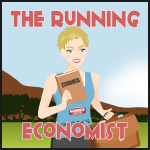I am in the early stages of working on my first book. The book will examine all things Al Capone through an economist's lens (
Gangster Spirits). Clearly such a book must provide context: the economic and social setting of Chicago and the US in the 1920's and 1930's.
Luckily others before me collated socioeconomic data from various government agencies for Chicago from the mid-19th century through the late 20th century. I have been cleaning and merging these databases and using some basic statistics to flesh out the stories of the era.
Below is a look at the relationship between the economy (as measured by the unemployment rate) and the marriage and divorce rates in Cook County.
The earliest date available for the marriage and divorce rates at the county level is 1890. County level unemployment data is not available until 1990, so the national metric is used. For the periods that national and county level data is available (monthly, 1990-2015) the national unemployment rate explains 92% of the variation in the Cook County unemployment rate, so the national measure is assumed to be a strong proxy for the county level measure in the period shown in the chart above.
The graph suggests a couple of things:
1) marriage and divorce rates "move" together contemporaneously in Cook County
2) marriage and divorce rates appear to move cyclically (inversely with unemployment)
Correlation coefficients provide additional support for these observations. The correlation coefficients between the unemployment rate and the Cook County marriage and divorce rates are -0.42 and -0.27, respectively. That between the marriage and divorce rates in Cook County is 0.33.
Finally, two simple linear regressions generate the following estimates:
The sample size for each regression is 84 and all estimated coefficients are statistically significant at the 0.05 level or better. The negative signs for the marginal effects support point #2. The values are interpreted as:
a) for each percentage point increase in the unemployment rate, the Cook County divorce rate falls by 0.07 percentage points.
b) for each percentage point increase in the unemployment rate, the Cook County marriage rate falls by 0.16 percentage points.
This negative relationship is supported by other research done at the state level.
Why? First lets look at the divorce rate. As the economy worsens, couples are less likely to divorce in Cook County. Perhaps hard economic times is associated with couples bonding together and fighting for their marriage. Or...its too damn expensive (explicitly and implicitly) to get a divorce.
The marriage rate estimates can be explained similarly. When times are tough, getting married is financially less attractive. Additionally, people could be spending more time looking for a job and a way to get by than looking for a mate.
During Prohibition and the heyday of Al Capone the average values for unemployment, and Cook County marriage and divorce rates were 8.6, 11.8, and 2.4, respectively. Compare these values to their pre-Prohibition values (1890-1919): 6.7, 16.5, and 1.2.
Of course more robust analysis is required, but it appears that Prohibition was a period of higher unemployment and divorce rates and lower marriage rates than previously experienced by Cook County residents.
Do you see any other patterns or have other explanations for the estimates and trends shown above?
Enjoy,



















































